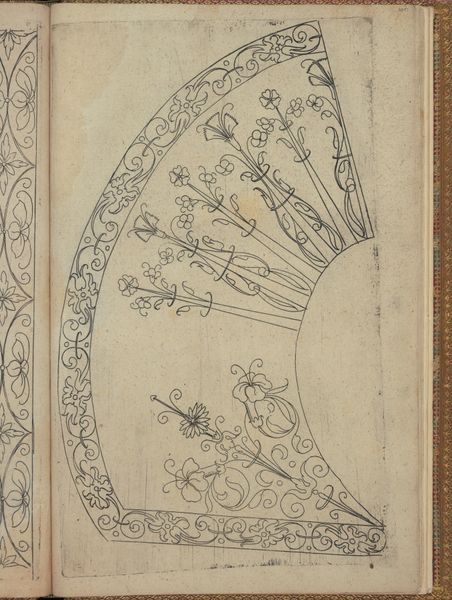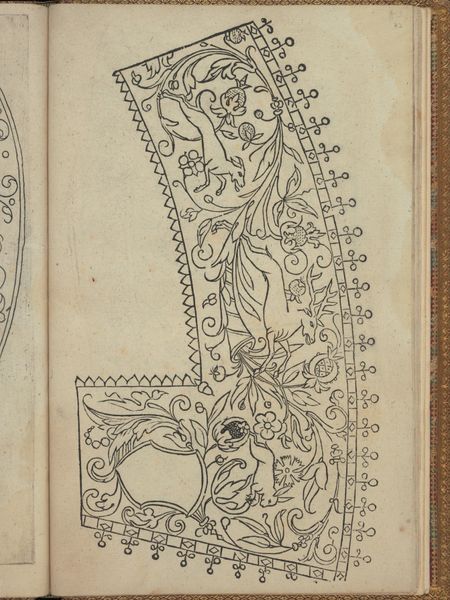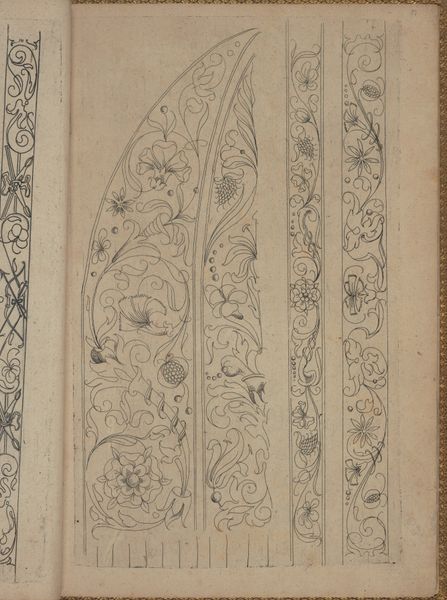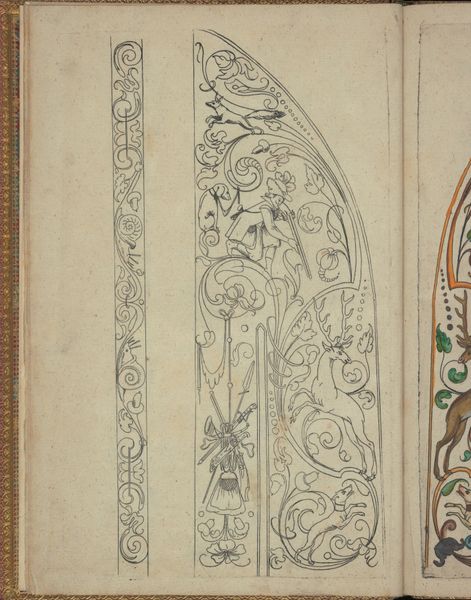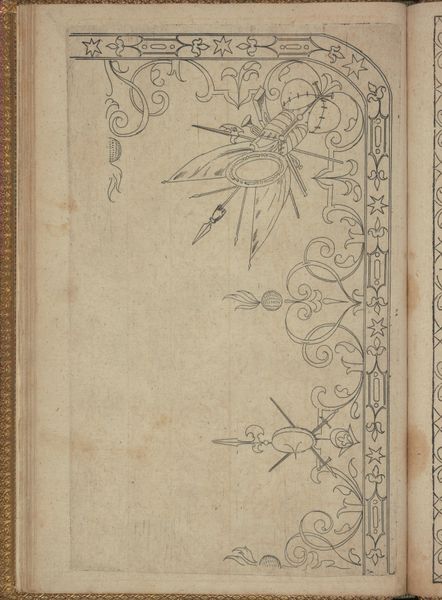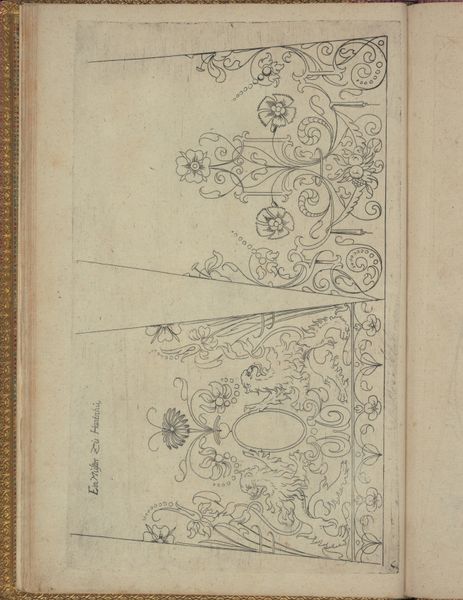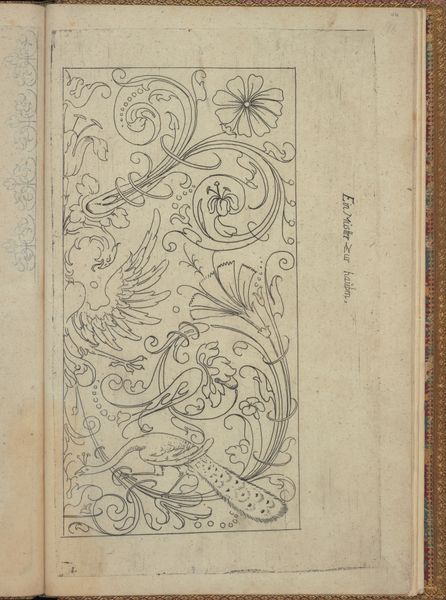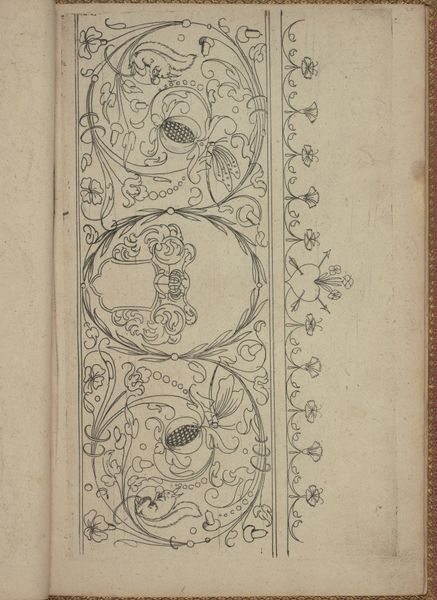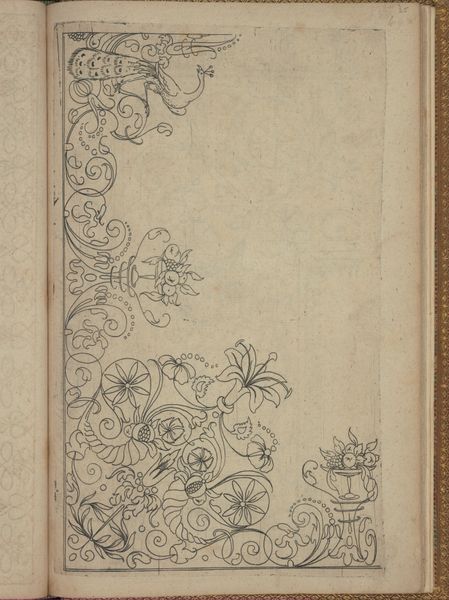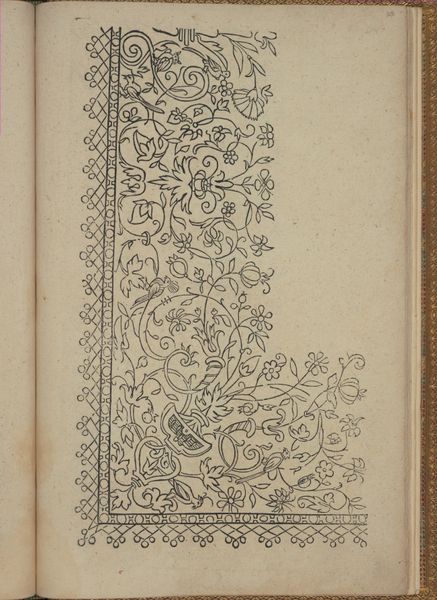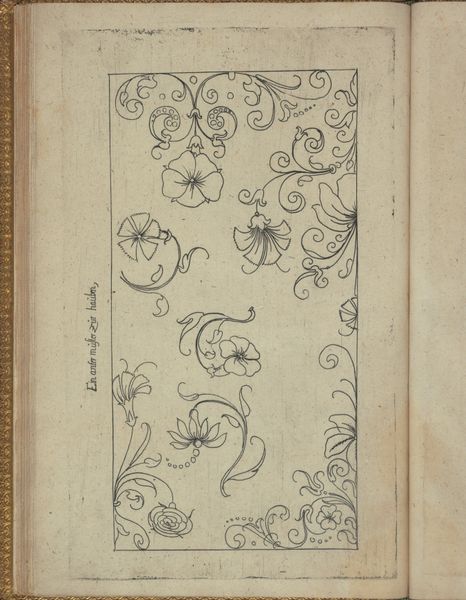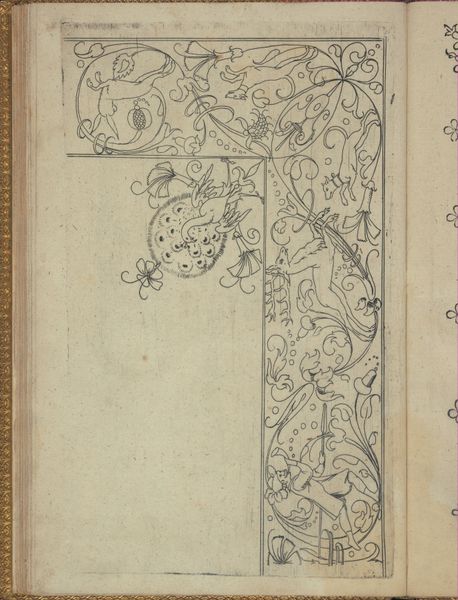
drawing, print, paper, pencil
#
drawing
# print
#
book
#
sketch book
#
paper
#
11_renaissance
#
coloured pencil
#
geometric
#
pencil
#
line
#
decorative-art
Dimensions: Overall: 12 x 8 1/16 in. (30.5 x 20.5 cm)
Copyright: Public Domain
Curator: Here we have a page, specifically 39r, from Andreas Bretschneider’s "New Modelbüch," created around 1615. It’s currently held at the Metropolitan Museum of Art. The work appears to be rendered in pencil, a sketch or a print on paper, likely part of a larger collection of design ideas. Editor: My first impression is that this page exudes a delicate formality. The intricate line work is incredibly precise and organized. I wonder, are these purely ornamental, or do these forms have some underlying symbolic resonance? Curator: They definitely point toward broader artistic trends. Model books like this were incredibly popular during the Renaissance and Baroque periods, acting almost as pattern libraries for artisans. They shaped not only art but the decorative arts in a broad sense. The shapes displayed may seem ornamental to us now, but they would have offered practical solutions for the construction of patterns across media, like stained glass or textiles. This object demonstrates how workshop practices of artisans are tied to economic and social networks. Editor: That’s fascinating. I am interested in how those floral elements and the circular motifs interlock, repeating across the page, hinting at something beyond pure decoration. Notice, for example, the arrow through the ring in one composition. Perhaps it's meant to convey more than simple decoration? Curator: Absolutely, the imagery has layered associations. Motifs of arrows through rings recurred to show a ruler's territory and can also connect to popular emblem books and broader symbol dictionaries used at the time. You are highlighting a crucial aspect, that cultural symbols were part of workshops across different regions in Europe during this period. We should note also that the book may be less about Bretschneider’s originality and more about documenting existing designs, functioning as a repository for sharing artistic concepts across different geographical settings. Editor: It certainly brings up questions about artistic creation versus artistic circulation. I mean, how much were artists actively "inventing," and how much were they creatively reinterpreting pre-existing forms and symbols? Curator: That’s exactly the tension this piece illuminates, pointing toward an environment of shared artistic resources where originality took a backseat to skillful adaptation and diffusion, shaping everything from personal adornments to the construction of dynastic display. Editor: It is amazing to see this all carefully drafted on paper! Looking closer allows me to better appreciate how it functions like an archive, documenting ideas that would circulate through various art objects in its time. Curator: Indeed, its cultural impact becomes far more visible once we appreciate it as part of the artistic ecosystems from which these forms originated.
Comments
No comments
Be the first to comment and join the conversation on the ultimate creative platform.

